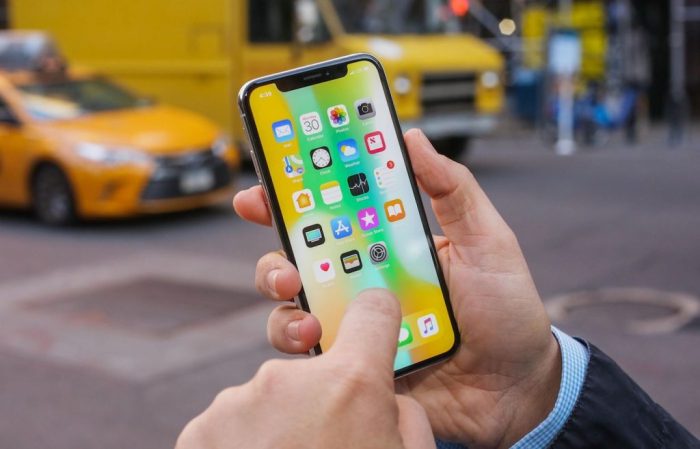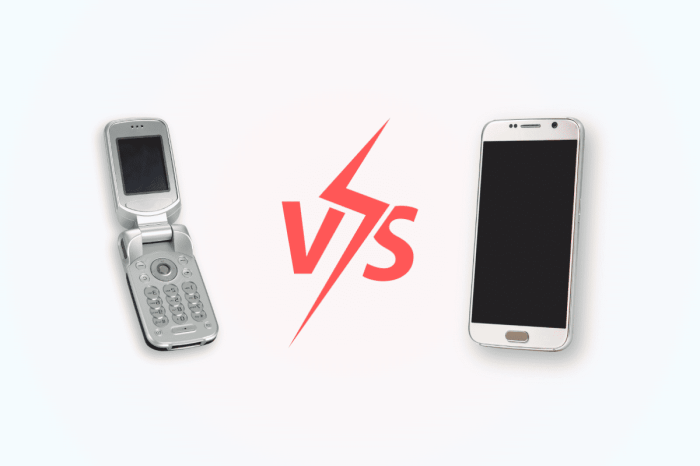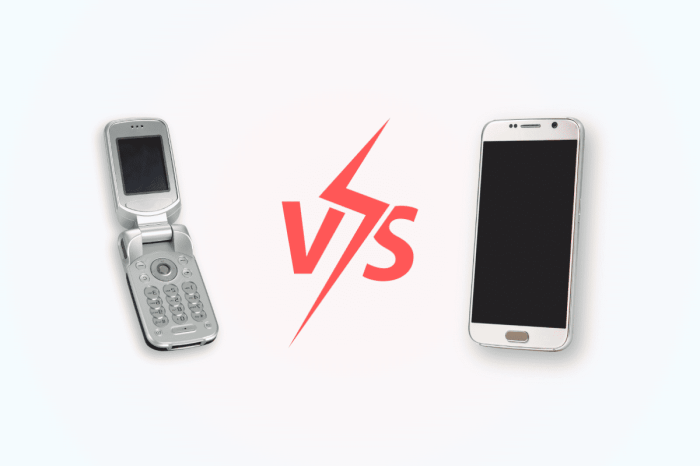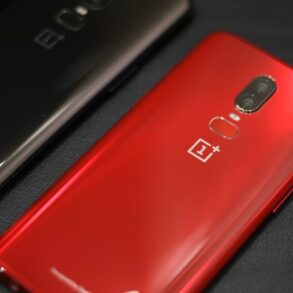Unlocked phones vs locked ones everything you need to know. Navigating the world of mobile phones can be tricky, especially when choosing between unlocked and locked devices. This comprehensive guide delves into the key differences, weighing the pros and cons of each option to help you make an informed decision. We’ll explore everything from cost considerations to international use, shedding light on the factors that influence your choice.
Get ready to unlock the secrets of mobile phone freedom!
This article thoroughly examines the advantages and disadvantages of both unlocked and locked phones. We’ll cover topics such as carrier restrictions, cost comparisons, flexibility, and international usage. By the end, you’ll have a clear understanding of which type best suits your needs and lifestyle.
Introduction to Unlocked vs. Locked Phones
Choosing between an unlocked and a locked phone involves understanding the key differences in terms of features, cost, and availability. This decision directly impacts your ability to use the phone with different carriers and customize its functionalities. Understanding these nuances is crucial for making an informed purchase.Unlocked phones offer the flexibility to use them with any carrier, while locked phones are tied to a specific network provider.
This fundamental difference shapes the consumer experience and dictates the range of options available.
Understanding the Differences
Unlocked phones, as the name suggests, are not tied to a particular mobile network. This means you can use them with any cellular provider, often offering more options and potentially lower costs in the long run. Conversely, locked phones are designed to operate exclusively with a specific carrier’s network. This limitation can restrict the options for users seeking a different provider or one that might offer better deals.
Implications for Consumers
Consumers choosing an unlocked phone gain the advantage of portability. They can switch carriers without needing a new phone, saving potential costs and avoiding contract obligations. Locked phones, on the other hand, might come with a lower upfront cost, sometimes as part of a bundled contract, which can be attractive for those who anticipate staying with the same provider for a longer period.
Scenarios Favoring Each Type
Unlocked phones are ideal for frequent travelers or those who anticipate switching carriers. Individuals who are planning on switching carriers or have plans to travel extensively benefit greatly from the flexibility that unlocked phones offer. Locked phones might be preferred by those seeking an attractive upfront price and a streamlined experience with a specific carrier’s services. This preference often aligns with those who are confident in staying with a particular provider for a longer time.
Common Features and Functionalities
Both unlocked and locked phones typically offer similar functionalities in terms of basic features. These features include calling, texting, internet access, and using various applications. The difference lies in the restrictions imposed by the network lock on the locked device. This restriction might involve limited network access outside the specified carrier.
Comparison Table
| Feature | Unlocked Phone | Locked Phone |
|---|---|---|
| Cost | Potentially higher upfront cost, but potentially lower long-term costs due to carrier flexibility | Potentially lower upfront cost, often as part of a contract |
| Availability | Generally available from multiple retailers, both online and offline | Primarily available through the specific carrier’s retail channels |
| Potential Restrictions | No restrictions on carrier usage | Limited to use with a specific carrier’s network |
Cost Considerations
Choosing between an unlocked and a locked phone often hinges on cost. While the initial price tag might seem attractive for locked phones, the long-term financial picture can reveal a different story. Understanding the potential savings and expenses associated with each option is crucial for making an informed decision.The initial price difference between unlocked and locked phones can be significant.
Carriers frequently offer locked phones at a lower upfront cost to incentivize customers to sign up for their plans. However, this apparent savings can quickly vanish when considering the full cost of ownership.
Pricing Differences
Locked phones often come with a lower upfront cost because the carrier is effectively subsidizing the device. This lower price is often coupled with a contractual obligation, such as a two-year service agreement. Conversely, unlocked phones typically have a higher initial price, but they offer greater flexibility in choosing your carrier and plan. The perceived higher price is sometimes balanced by the potential for long-term savings.
Long-Term Cost Savings
Purchasing an unlocked phone can lead to substantial long-term cost savings. You gain the freedom to switch carriers without penalty, often saving on carrier-specific fees and hidden costs. This flexibility allows you to choose the best plan and avoid being locked into a potentially overpriced carrier contract.
Calculating Total Cost of Ownership
Calculating the total cost of ownership (TCO) for both options is essential. For locked phones, consider the upfront price, the cost of the carrier contract, and any early termination fees. For unlocked phones, factor in the upfront price, the cost of a SIM card or eSIM, and the cost of any data plans.
So, you’re looking at unlocked phones versus locked ones? Knowing the ins and outs is key, especially now that the Mattel Aristotle AI child monitor has been canceled. This leaves parents needing to weigh options carefully for their kids’ safety. Thankfully, the decision to explore unlocked phones vs. locked ones, considering the specifics of your needs, is a great place to start when making these decisions.
Ultimately, understanding the pros and cons of each is vital for finding the best fit. Check out this article for more on the Mattel Aristotle AI child monitor canceled: mattel aristotle ai child monitor canceled. The range of options available in the market today makes the decision-making process even more crucial. Armed with the right knowledge, you can confidently choose the best phone for your family.
Total Cost of Ownership (TCO) = Upfront Price + Contract Costs + (Monthly Fees x Contract Length) + Early Termination Fees (if applicable)
Carrier Plans vs. SIM Cards
Carrier-specific plans for locked phones often include bundled data, minutes, and texts. However, these plans can be more expensive than independently purchasing similar data packages for unlocked phones. Unlocked phones allow you to explore various SIM card options from different carriers and select the plan that best suits your needs and budget.
Price Comparison Table
The following table illustrates the potential price variations for a similar model phone (e.g., a mid-range smartphone). It assumes a 24-month contract period and typical data plan pricing. Note that actual prices may vary based on location and specific carrier/plan offerings.
| Feature | Unlocked Phone | Locked Phone (Carrier A) |
|---|---|---|
| Upfront Price | $650 | $500 |
| Monthly Data Plan (2GB) | $50 | $60 |
| Contract Length | Flexible | 24 months |
| Total Cost (with 2GB plan) | $1,900 (estimated) | $1,880 (estimated) |
Carrier Restrictions and Benefits
Choosing between a locked and unlocked phone often comes down to your relationship with a specific carrier. Understanding the restrictions and benefits associated with each is crucial for making an informed decision. Locked phones, while offering ease of setup and seamless integration, often come with limitations that can impact your overall mobile experience.Locked phones are typically tied to a specific mobile network operator.
This binding agreement restricts the phone’s use to that particular network. While this might seem convenient initially, the restrictions can become a significant factor in your long-term mobile experience.
Network Limitations of Locked Phones
Locked phones are designed to function optimally with a particular carrier’s network. This means they might not work with other networks, or they might require specific configurations to operate with a different carrier’s network. This limitation directly affects the phone’s usability across different regions or when you change carriers.
Carrier-Specific Features
Some carriers offer exclusive features that are only accessible with their locked devices. These features might include advanced data plans, special mobile apps, or exclusive content. These benefits can be attractive for users who heavily utilize carrier-specific services. However, the availability and value of these features are often limited to the specific carrier and may not be beneficial for everyone.
Impact on Data Plans and Roaming
Data plans and roaming capabilities are significantly impacted by the choice of a locked phone. Data plans offered by the carrier to which the phone is locked are typically integrated with the phone, but these might not be the best options available. Roaming, when traveling outside of the phone’s home network, may be restricted or costly with a locked phone.
Ease of Setup and Integration
Locked phones often have a simplified activation process and seamless integration with the carrier’s network. The activation process is frequently tailored to the specific carrier and may be faster and less complicated than activating an unlocked device with a different network. However, this ease comes at a potential cost in flexibility.
Activation Process for Locked Phones
Activating a locked phone with a particular carrier typically involves providing the necessary information, including the IMEI number, and potentially completing an online registration. The carrier may require specific documents or procedures to verify your eligibility. It’s crucial to understand the activation process beforehand to avoid any delays or complications.
Potential Carrier-Specific Benefits and Limitations
| Carrier-Specific Benefit | Carrier-Specific Limitation |
|---|---|
| Exclusive data plans tailored to the carrier’s network | Limited data roaming options when outside of the home network |
| Simplified activation process | Inability to use the phone with a different carrier’s network |
| Integration with carrier-specific apps and services | Potential higher costs for data or roaming when using a different network |
| Priority support from the carrier | No access to features or apps from other carriers |
Flexibility and Customization: Unlocked Phones Vs Locked Ones Everything You Need To Know
Unlocking your phone’s potential truly shines when it comes to flexibility and customization. This freedom from carrier restrictions allows users to tailor their mobile experience to their specific needs and preferences, opening up a world of possibilities. From choosing your preferred SIM card to installing custom software, unlocked phones offer unparalleled control over your device.Choosing an unlocked phone grants you significant control over your mobile experience, empowering you to adjust and adapt to your evolving needs.
This control extends to selecting the perfect mobile data plan, installing custom software, and even tweaking the phone’s operating system for an enhanced user experience. This contrasts sharply with locked phones, where these choices are dictated by the carrier.
Changing SIM Cards and Carriers
Unlocked phones excel at adapting to changing communication needs. The ability to swap SIM cards effortlessly allows users to switch between carriers or utilize multiple SIMs without any technical hassles. This flexibility is a significant advantage, especially for travelers or individuals who frequently switch service providers. Locked phones, on the other hand, are often tied to a specific carrier, limiting options for SIM changes and requiring a new phone to access different networks.
Using Multiple Mobile Data Plans
The versatility of unlocked phones extends to the realm of mobile data plans. With an unlocked phone, you can leverage various data plans from different carriers, maximizing your data usage and value. This freedom is absent in locked phones, which typically restrict users to the data plans offered by their original carrier. For instance, if you find a better data plan from a different provider, an unlocked phone lets you seamlessly transition, ensuring optimal value for your mobile needs.
Custom ROMs and Software Modifications
Unlocked phones provide access to a wide range of customization options, enabling users to personalize their device’s operating system. This goes beyond basic themes and wallpapers. Installing custom ROMs, which are modified versions of the operating system, allows for significant changes in performance, functionality, and aesthetics. These ROMs can offer enhanced performance or specialized features not available in the standard operating system.
Table of Customization Options for Unlocked Phones
| Customization Option | Description |
|---|---|
| Custom ROMs | Modified versions of the operating system offering enhanced performance, features, or aesthetics. |
| Kernel Modifications | Changes to the phone’s core operating system, enabling further performance optimization or specific functionalities. |
| Theme and Wallpaper Customization | Personalization options to adjust the visual appearance of the phone’s interface. |
| Third-party Apps | Installation of apps from sources other than the standard app store. |
| Xposed Framework | An open-source framework that allows for extensive customization and extensions of the Android operating system. |
International Use and Roaming
Traveling the world and staying connected is easier than ever. But the choice of phone—locked or unlocked—significantly impacts your international experience. Understanding the nuances of roaming is crucial for avoiding unexpected charges and ensuring seamless communication. This section delves into how unlocked phones simplify international use, contrasting it with the limitations of locked phones.
Facilitating International Travel with Unlocked Phones
Unlocked phones provide unparalleled flexibility for international use. They allow you to use local SIM cards in different countries, eliminating the need for costly roaming services. This means you can avoid exorbitant charges associated with international data usage, calls, and texts. Essentially, you’re using the local network infrastructure, making your communication cost-effective and reliable.
Roaming with a Locked Phone: Advantages and Disadvantages
Using a locked phone in another country often requires the use of the carrier’s international roaming services. While carriers often offer some international coverage, the cost can be substantial. Advantages include a degree of familiarity with the service, as you are relying on a system you are already accustomed to. Disadvantages are significant. Roaming charges can quickly add up, and you may encounter network limitations or reduced data speeds.
So, you’re diving into the world of unlocked phones vs. locked ones? It’s a crucial decision, especially if you’re looking for flexibility. Meanwhile, did you know the Playdate handheld is seeing a price increase? There’s a last chance preorder deal sale happening right now! Check out this sale before it’s too late.
Ultimately, understanding the pros and cons of unlocked vs. locked phones will help you make the best choice for your needs, whether you’re after flexibility or a specific carrier deal.
The lack of flexibility to switch to local SIM cards restricts your ability to take advantage of cheaper local rates.
Cost and Accessibility of Roaming
The cost of roaming varies greatly between countries and carriers. Unlocked phones, using local SIM cards, typically result in far lower costs. Locked phones, relying on roaming services, are subject to the pricing structure of the carrier, often resulting in considerably higher costs. Accessibility can also be a problem with locked phones, as coverage and service quality can vary drastically depending on the local network conditions and the carrier’s roaming agreements.
Researching Local Mobile Networks
Before your trip, researching local mobile networks in your destination is essential. Websites like GSMArena, dedicated phone review sites, and carrier websites provide valuable information about network coverage and data plans in specific areas. Knowing the local network’s coverage in the regions you intend to visit allows you to plan your connectivity needs. This proactive approach can save you from costly surprises during your trip.
Look into local SIM card options for pre-paid plans, which can be purchased at local stores or online.
So, you’re looking at unlocked phones versus locked ones? It’s a big decision, and knowing the ins and outs is key. While you’re researching, you might also be interested in Instagram’s recent move to create a dedicated Reels tab in its lite app, a helpful feature for those who prefer a streamlined experience. Ultimately, the best choice for your phone depends on your needs and budget.
Understanding the differences between unlocked and locked phones will help you make the right call.
Roaming Costs and Accessibility Comparison
| Country | Unlocked Phone (Local SIM) | Locked Phone (Roaming) |
|---|---|---|
| United States | Low, dependent on local SIM plan | Low, dependent on carrier and coverage |
| United Kingdom | Low, dependent on local SIM plan | Moderate, dependent on carrier and coverage |
| Japan | Low, dependent on local SIM plan | Moderate, dependent on carrier and coverage |
| Australia | Low, dependent on local SIM plan | Moderate, dependent on carrier and coverage |
| South Korea | Low, dependent on local SIM plan | Moderate, dependent on carrier and coverage |
Note: Costs are approximate and may vary based on specific plans and usage.
Support and Warranty
Navigating the world of phone support and warranties can be tricky, especially when considering unlocked versus locked devices. Understanding the differences in coverage and procedures can save you headaches and ensure you’re adequately protected. This section delves into the potential variations in support and warranty processes for each type of phone.
Manufacturer Support for Unlocked Phones
Manufacturer support for unlocked phones typically follows a standard process. Support is usually accessed through the manufacturer’s website or app, providing a range of resources, including FAQs, troubleshooting guides, and online chat or phone support. Often, the manufacturer’s support is comprehensive and covers a variety of issues, from software problems to hardware malfunctions. This broader support often extends beyond the initial warranty period, though the extent of this post-warranty support can vary.
Carrier Support for Locked Phones
Locked phones are tied to a specific carrier. Therefore, carrier support is paramount. Support channels for locked devices typically include phone support, online portals, and in-store assistance at authorized carrier locations. The carrier’s support usually prioritizes issues related to the specific carrier’s services, like network connectivity and data plans.
Warranty Coverage Processes, Unlocked phones vs locked ones everything you need to know
Claiming warranty coverage for both unlocked and locked phones typically requires similar documentation, like a purchase receipt and a description of the fault. However, the specific procedures and required documentation might vary slightly between manufacturers and carriers. Unlocking a locked phone might affect its warranty, so checking the fine print is crucial.
Unlocking and Warranty Impact
Unlocking a phone, in some cases, might void the carrier’s warranty, though this is not universally true. It’s vital to consult the manufacturer’s and carrier’s terms and conditions for specific information on warranty implications after unlocking.
Comparison Table
| Feature | Unlocked Phone | Locked Phone |
|---|---|---|
| Manufacturer Support | Typically comprehensive, including FAQs, troubleshooting guides, online chat, and phone support. | Limited to issues related to the device’s functionality, not necessarily the carrier’s services. May be accessed through manufacturer support, but carrier support may be necessary for issues related to carrier services. |
| Carrier Support | Limited, usually for specific network or device issues. | Primarily for carrier services and device issues directly related to the carrier’s network. |
| Warranty Claim Process | Usually involves contacting the manufacturer directly and following their online or phone support instructions. | Often involves contacting the carrier, sometimes with a need to visit a physical store or complete online forms. |
| Unlocking Impact | Usually does not affect manufacturer warranty, but check manufacturer terms. | May void the carrier’s warranty; check the carrier’s terms and conditions. |
Choosing the Right Phone

Deciding between an unlocked and a locked phone hinges on your specific needs and how you intend to use your device. Understanding the nuances of each option is crucial to making an informed purchase. Factors like your carrier preference, international travel plans, and desired level of customization all play a significant role in the selection process. Consider carefully before making your choice.
A Structured Approach to Phone Selection
Choosing the right phone involves a methodical approach, considering various factors to ensure a device that perfectly aligns with your needs. Start by evaluating your current communication habits, your anticipated usage patterns, and any future plans. This will help you pinpoint the essential features and capabilities required for your phone. For instance, if you frequently travel internationally, an unlocked phone might be a better choice for flexibility.
Factors to Consider When Making a Purchase Decision
Several crucial factors influence the decision-making process for phone selection. Your existing carrier relationship, your familiarity with specific carriers’ features, and the price point of the phone are important considerations. Also, consider the phone’s compatibility with your current SIM card or your potential need for future SIM cards.
Identifying Unlocked and Locked Phones
Identifying whether a phone is unlocked or locked is essential for making the right purchase. The retailer or the phone’s specifications will usually state if a phone is unlocked or not. You can often find this information on the product listing page or the manufacturer’s website. Look for explicit wording like “unlocked,” “carrier-free,” or “compatible with any SIM card.”
Checking Phone Compatibility with a Specific SIM Card
Compatibility with a specific SIM card is critical. Before making a purchase, always confirm that the phone model supports the SIM card you intend to use. This step is crucial to prevent unnecessary returns or frustrations. Check the manufacturer’s website or consult with the SIM card provider to ensure compatibility.
Summary of Key Differences
| Feature | Unlocked Phone | Locked Phone |
|---|---|---|
| Carrier Restrictions | No restrictions; use any SIM card | Limited to a specific carrier |
| Cost | Potentially lower or higher depending on the model | Typically lower upfront cost (often subsidized) |
| Flexibility | High; customize features and use any SIM card | Limited; restricted to the carrier’s network |
| International Use | Easy international use, often with roaming options | Potentially more complex international use |
| Support and Warranty | Support and warranty may vary based on retailer | Typically provided by the carrier |
This table concisely summarizes the key differences between unlocked and locked phones, offering a quick comparison for informed decision-making.
Ending Remarks

In conclusion, choosing between an unlocked and locked phone hinges on your individual needs and priorities. Unlocking your phone offers significant flexibility in terms of carriers and customization, but it might involve more upfront research and setup. Locked phones, on the other hand, simplify initial setup and often come with attractive bundled plans, but limit your options down the road.
Weigh the costs, benefits, and potential restrictions carefully to make the best choice for your mobile experience. Ultimately, the decision rests with you.










